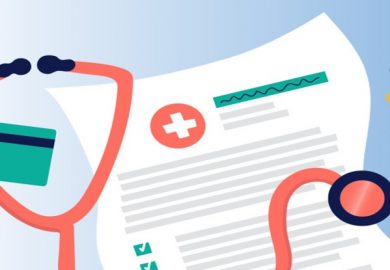Effective EHR documentation
One of the most common questions asked by the healthcare practices is if their EHR documentation practices were effective and how can they improve them to bring more efficiency and efficacy in the system.
Clinical documentation is the record keeping of patient’s medical history, treatment, trials, or tests. This is a key piece of information that drives care decisions, supports evidence-based medicine, informs quality metrics, and facilitates communication between providers. That is why accuracy in the patient clinical records is all the more important. The documentation must be factual, timely, and specific in its representation of care provided. This information is also important for the medical billing staff in evaluation claims.
Clinical documentation is an ongoing process that should capture each exam with the patient and document the most up-to-date information. Even if a patient shares information that originated outside the practice, that information should be captured as well by the providers. This makes the clinical documentation complicated. An MGMA stat poll found lack of workflow optimization for clinical documentation as a top reason for increasing denials. So, while it is helpful to encourage patients to keep tabs on their own records, the providers must also be mindful and knowledgeable about EHR documentation. The providers must also be acquainted with the clinical documentation steps. Here is the CMS rules and guidance on clinical documentation.
One of the most efficient methods for maintaining clinical documentation is employing the subjective, objective, assessment, and plan (SOAP) method. It is a framework for adding patient notes and compiling other documentation. They often serve as a template for adding patient information to the EHR system. The four components of SOAP note are as follows:
1. Subjective: patient’s description of their health conditions or issues
2. Objective: the record of physical exam and observation of vital signs
3. Assessment: a summary of the diagnosis
4. Plan: the course of treatment including prescriptions, procedures, therapy, etc.
The SOAP note helps provide a standard format to keep a track of patient’s complete information which makes the retrieval and review of data much easier by the providers.
Even while documenting the data by utilizing standardized templates, providers need to be mindful of data that will be pre populated. Providers should take steps to capture the specifics of the patient’s situation which may involve removing, changing, or updating certain sections of the standardized template. The goal here is to capture consistent information and avoid any discrepancies or contradiction in the findings due to pre population of the data.
Providers should also be mindful of copying a note. It may seem like an easy way and may also save time, but it really compromises the accuracy of the captured data. The chronologies can be confusing, or patient’s condition can be misrepresented.
Now let’s talk about some approaches to documentation that providers and healthcare staff can take for better documentation:
1. Communication: Non-provider staff members should communicate consistently about clinical documentation. If there’s an issue with patient records, they should feel empowered to speak up.
2. Collaboration: Often, multiple providers will contribute to clinical documentation. There should be an established process for collaboration and decision-making, as the EHR provides an opportunity for providers to review one another’s notes and see the bigger picture.
3. Keeping tabs: A practice should conduct regular reviews of documentation to ensure providers and staff are following best practices.
Clinical documentation affects not only the clinical exam but billing and other aspects of the practice. Thus, all providers and practice staff share the responsibility for proper EHR documentation.. So, Elixir is the best way for moving forward. With easy-to-use customizable note templates, intuitive and intelligent pre population and auto-population of patient notes, really help the provider in patient documentation. Elixir’s robust system has unparalleled checks and balances to make sure the right documentation has been completed by the provider.
Elixir Practice Management Suite is a comprehensive solution consisting of four modules that fit rightly into your healthcare business irrespective of your facility size and type. The Elixir Contact Center module helps manage the entire facility census and the patient intake process. At the same time, the Elixir EHR solution aims at delivering an end-to-end seamless patient care experience. The third module is Elixir Billing, and it effectively fetches data from any EHR platform to process medical claims and manages the entire revenue cycle. Elixir Patient Portal is the last module, and it provides an integrated experience for the patients.
Do fill out this contact form if you feel that Elixir will be an asset to your system.


